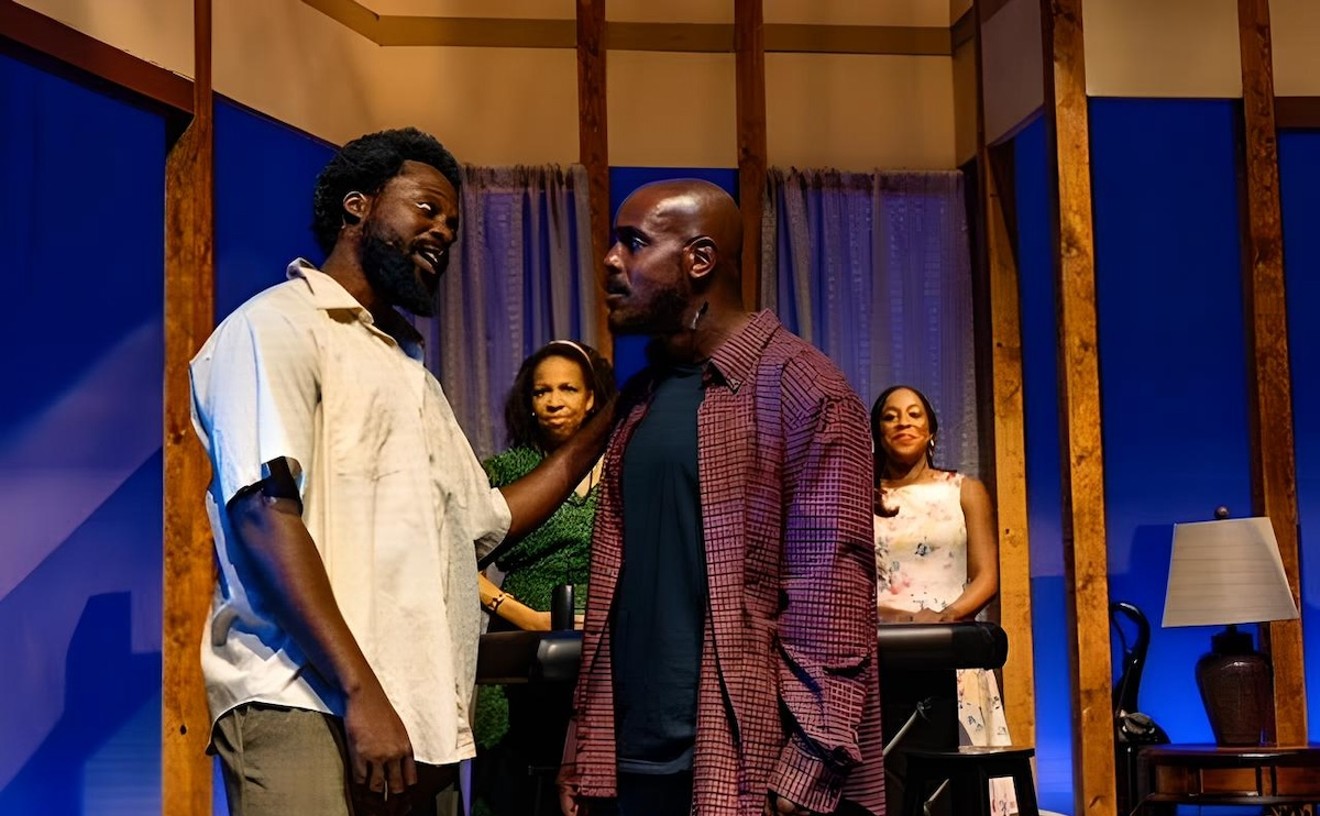The Inkheads are a world famous Miami graffiti crew whose work stretches back to the '80s. They were featured and interviewed in the first issue of 12 oz. Prophet, the first full-color graffiti magazine, which was produced in Miami.
Jel Martinez has been throwing tags since the fifth grade, and has been an Inkhead since 1993 and a studio painter since 2007. His new work deals with the aesthetics of graffiti removal. We spoke to Jel about how he got his name, losing his work to the city, and the new work that emerges because of it.
New Times: How did you get started?
Jel Martinez: I grew up in Westchester, which is like Bird Road around 112th Avenue. I went to an elementary school in that neighborhood. When I was in 5th grade I started noticing a lot of tags and graffiti in my my elementary. I got influenced and inspired to start doing my own name, but i didn't know the culture or the rules to graff. I started seeing this guy Deed all over the school. Happens to be, my name is Joe, so I liked the letter J, I wrote Jeed, and the next day my name was all crossed out. I thought like deed might be some big guy wants to beat me up. Another friend of mine knew Deed from the neighborhood. He told him to pass the message on that "don't be writing that, its too close to my name." My one friend started writing Del, so I started writing Jel, and my other friend was Cel. This was back in 1989. After a while me and Deed started being really good fiends. Like, to this day we're best friends.
How'd you get involved with Inkheads?
In 1992, we came up with DGS, Da Graff Staff. By '93, they put me into Inkheads. They had seen me, and my work, and they put me down with them. I was very honored to be part of the crew, and painting from here to Savannah, and all over Miami.
Where did you go from there?
We kept doing pieces and painting, and it was later, like say '98 or' 99 that we started getting covered up by the city a lot. It had to do a lot with the Summit of the Americas when all these political leaders came to town and the city wanted to make it look all pretty for them. That gave me a really hard time. A lot of my work was erased, so I would still write but not as much. I would do small tags, or things that wouldn't get erased, or legal walls that would stay there running. That's when I started thinking about the removal of work.
What's the idea behind that?
Around 2007, I started to really think about all these buffs. I kind of started liking them, like it was another style of graffiti. Like the city's graffiti. I was getting older and not wanting to do illegal painting. I started painting on canvas and wood panels, and started photographing like 3 1/2 years of graffiti removal.
What interests you about it?
The expression of the employee who erased it. How some of it shows right through. How the solvent smears. I feel how they're creating. Me and them. The paintings that I'm doing now are basically showing the viewer what happens after the graffiti. They erase one art form and create another art form unintentionally, and through this process four styles emerge.
And these styles are?
One is blur: They spray a solvent and then they smear it. It makes a big cloudy paint where you can kind of see what was there before, especially if you're a writer.
There's radical: On a bigger tag they use a zig zag roller dipped in paint.
There's symmetrical: They just cover up the vandalism with rectangles and squares of paint.
There's ghosting: They just erase the outline of the spray paint, but you can still kind of see the name.
All these styles are born naturally, subconsciously between the writers and the city. They're all unique in their own way and have their own characteristics. They all have a story kind of. From the tagger to the employee.
Do you think the city employee considers what they do to be art?
I don't think they see it as art. What's happening is that all this is created subconsciously. Like when you know you're gonna turn the corner, you just press the breaks without thinking. They don't even know what they're doing, they just go up and do it. That's why I find it so interesting. These shapes were created naturally.
What's the history with 12 oz. Prophet?
It was a full color graffiti magazine at a time when there was no full color graff magazine. It came from Miami and ended up being the best worldwide, and the Inkheads had our work featured in the first issue, and we were interviewed. It's all online now.
What's your perspective from then till now?
If it wasn't for me doing what I did in the past, there's no way I could do what I'm working on now. In order to do what I'm doing you have to have lived the whole process. It can't be somebody that's never done graffiti, but has gone to art school their whole life. If they say, "I'm gonna paint these patches," it wouldn't be the same. You have to have experienced getting covered up by the city.
Jel just finished a solo exhibition at Butter Gallery, check out jelmartinez.com for more info on future exhibitions.
Follow Cultist on Facebook and Twitter @CultistMiami.










